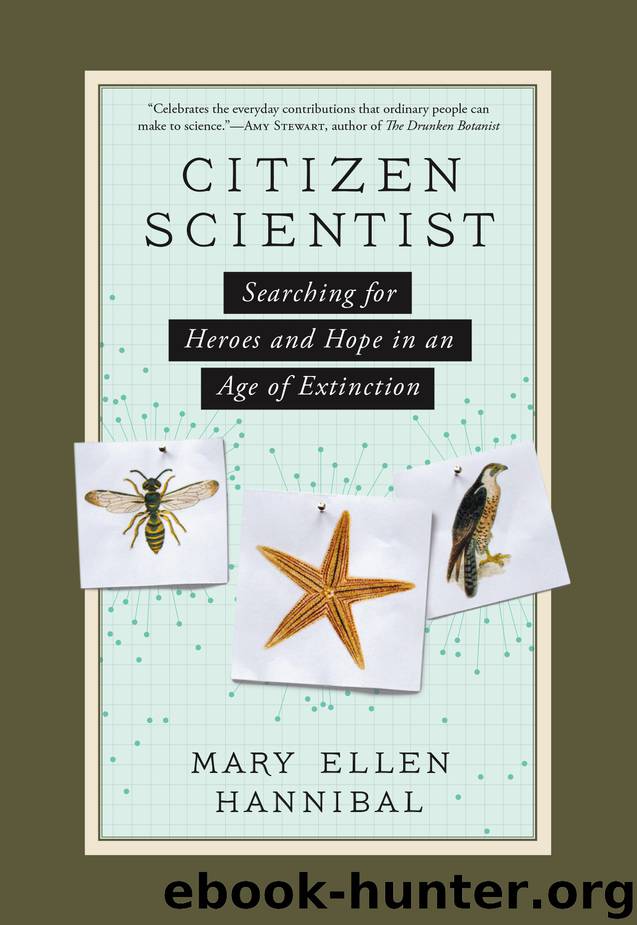Citizen Scientist by Mary Ellen Hannibal

Author:Mary Ellen Hannibal
Language: eng
Format: epub
Publisher: The Experiment
Published: 2016-08-29T19:35:53+00:00
Razors were broke out and we all took a shave, some for the first and some for the second time in 17 months. Old clothes are being thrown overboard so the Board of Health will not hold us up, and we are washing in fresh water. At noon we set our course for the lightship and made up to it at 3:00 P.M. Here we picked up our pilot, Captain George Kortz, famous to all mariners entering the port of San Francisco, and shaped our course for the Golden Gate. . . . With the help of light breezes and a strong incoming tide, we drifted through the Golden Gate and narrowly missed colliding with the pilot boat Lady Mine, which was in the same predicament as ourselves. By 9:00 P.M. we reached Lime Point and came so close to the rocks that we put out the ship’s boat and tried to pull the schooner’s head around. Not succeeding in this, we hailed a passing crab fisherman in his fishing smack Louisa, and for the sum of ten dollars he agreed to tow us across to the quarantine station, where we arrived at 10:15 P.M., 65 days out from Culpepper Island and the 519th day of the voyage.
When the Academy returned with its cache, the specimens were stored in a walled-off section of the otherwise destroyed building. Not ideal conditions for studying them. At the same time, the decimation of the academy incited even more fervor to rebuild its reputation, and curators began publishing papers on their findings. The flood was initiated in 1907 with a paper on the giant land tortoises; by 1911 there were papers on butterflies and a 280-page botanical survey by Alban Stewart; in 1912, a monograph on snakes. In 1913 Edward Winslow Gifford produced a paper on the birds of the Galápagos. These publications, disseminated to scientific institutions around the world, essentially re-established the museum. Reverberations from personality differences began to be felt; Alban Stewart, a.k.a. “Granny,” for example, appears to have coded his botanical specimens in such a way that no one else could ever make sense of them. Rebuffed by the academy, where he was refused a paying job, Stewart went on to a prominent career elsewhere. The specimens he collected for the academy remained in California; later, the botanist Alice Eastwood, charged with figuring out his gnomic categorizing, threw up her hands in disgust and called his work a “Rosetta stone.” This is pretty bad behavior for a scientist—to obscure his own research so that others may not benefit from it. Yet, of course, history may eventually find another ending for Stewart’s story, if some once or future botanist can figure out his key.
Download
This site does not store any files on its server. We only index and link to content provided by other sites. Please contact the content providers to delete copyright contents if any and email us, we'll remove relevant links or contents immediately.
Man-made Catastrophes and Risk Information Concealment by Dmitry Chernov & Didier Sornette(5921)
The Revenge of Geography: What the Map Tells Us About Coming Conflicts and the Battle Against Fate by Kaplan Robert D(4035)
Zero Waste Home by Bea Johnson(3777)
COSMOS by Carl Sagan(3554)
Good by S. Walden(3485)
In a Sunburned Country by Bill Bryson(3481)
The Fate of Rome: Climate, Disease, and the End of an Empire (The Princeton History of the Ancient World) by Kyle Harper(3003)
A Wilder Time by William E. Glassley(2818)
Camino Island by John Grisham(2762)
The Ogre by Doug Scott(2631)
Organic Mushroom Farming and Mycoremediation by Tradd Cotter(2626)
Human Dynamics Research in Smart and Connected Communities by Shih-Lung Shaw & Daniel Sui(2465)
Energy Myths and Realities by Vaclav Smil(2438)
The Traveler's Gift by Andy Andrews(2409)
9781803241661-PYTHON FOR ARCGIS PRO by Unknown(2321)
Inside the Middle East by Avi Melamed(2305)
Birds of New Guinea by Pratt Thane K.; Beehler Bruce M.; Anderton John C(2224)
A History of Warfare by John Keegan(2185)
Ultimate Navigation Manual by Lyle Brotherton(2129)
